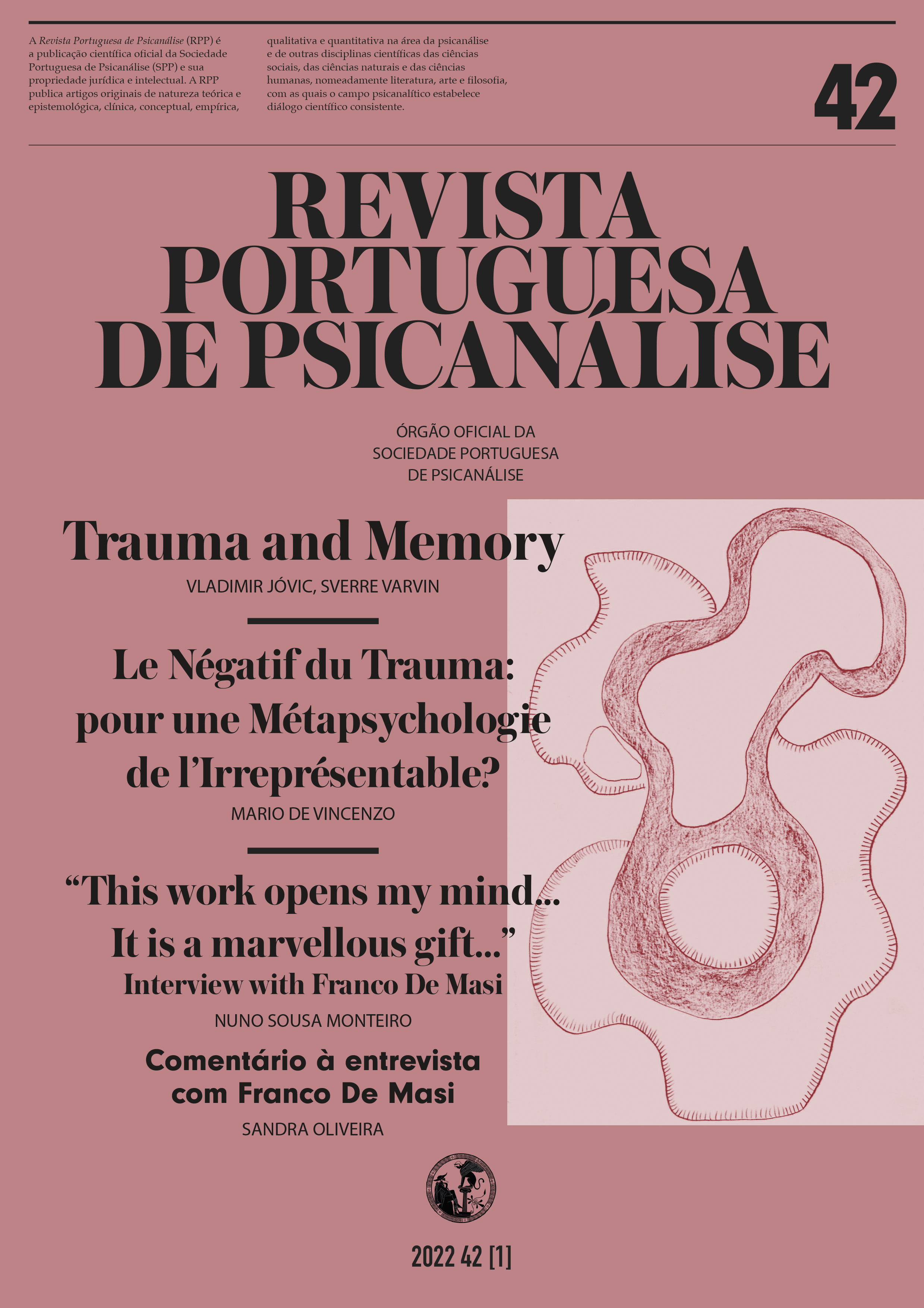Eros e Tanatos: Reflexões Sobre A Destrutividade Contemporânea

Abstract
Eros and Thanatos - Reflections on Contemporary Destructiveness
The psychoanalyst Vamik Volkan hypothesizes that there is the absolute, rebalancing need to have friends and enemies, both personally, as a group, and even nationally. In this way, external and internal, depressive, or helpless and persecutory objects are created, and in this way the mental areas of Eros and Thanatos are created, which are fundamental instruments in the classification of reality. “Persecutory and desperate goats” and “exciting and exhilarating goats” are thus bred and used. Reflections are made on pedophilia or corruption, as prevalent social evils, and the fear of understanding them, the dialogue between Einstein and Freud on violence and aggression and their inevitability is also remembered. Freud admits that only education can lessen them, but not make them disappear. The biblical episode of Samson and Delilah helps to understand these concepts and, finally, some considerations about contemporary crises.
Keywords
Eros and Thanatos, Destructiveness, "Scapegoats", "Animating goats"
Author Biography
Emílio Salgueiro
Pedopsiquiatra e psicanalista. Professor Catedrático jubilado de Psicologia e Psicanálise. Membro Titular, com funções didáticas, da Sociedade Portuguesa de Psicanálise (SPP) e da Associação Psicanalítica Internacional (IPA).
References
- A Bíblia de Jerusalém. S. Paulo: Paulus, 7ª impressão, 1995.
- Bion, W. R. (1967). Second thoughts – Selected papers on psycho-analysis. London: Maresfield Reprints, 1984.
- Covington, C., Williams, P., Arundale, J. & Knox, J. (Eds.). (2002). Terrorism and War – Unconscious dynamics of political violence. London: Karnac Books.
- Derlieu, A. (1997). Sigmund Freud – Index thématique. Paris: Antrophos.
- Eigen, M. (2005). Emotional storm. Middleton, Connecticut: Wesleyan University Press.
- Freud/Einstein Correspondence. (1932). In Covington, C. et al, Eds. (2002). Terrorism and war - Unconscious dynamics of political violence (pp. 187-202). London: Karnac Books.
- Freud, E., Freud, L. & Grubrich-Simitis, I. (Dir.) (1974). Sigmund Freud, lieux, visages, objets. Bruxelles: Editions Complexe/Gallimard, 1979.
- Freud Museum of London. (1992). The Diary of Sigmund Freud, 1929-1939. London: Hogarth Press.
- Freud, S. (1937). Analysis terminable and interminable. S.E. 23, (pp. 209-253).
- Gay, P. (1988). Freud, a life for our time. London : Papermac, 1989.
- Green, A. (2002). Idées directrices pour une psychanalyse contemporaine. Paris : PUF.
- Jaques, E. (1955). Os sistemas sociais como defesa contra a ansiedade persecutória e depressiva – Uma contribuição para o estudo psicanalítico dos processos sociais. In M. Klein, et al. Temas de psicanálise aplicada (pp.207-231). Rio de Janeiro: Zahar Editores.
- Jones, E. (1953). The life and work of Sigmund Freud. London: Penguin Books/Hogart Press, 1964.
- Klein, M. (1948). Contributions to psycho-analysis – 1921-1945. London: The Hogarth Press and the Institute of Psycho-analysis, 1968.
- Klein, M., Heimann, P., & Money-Kyrle, R.E. (1955). Temas de psicanálise aplicada. Rio de Janeiro: Zahar Editores, 1969.
- Klemperer, V. (1995). I will bear witness 1933-1941 – a diary of the nazi years (vol.I). New York: The Modern Library, 1999.
- Meltzer, D. (1978). The Kleinian development – Part III, The clinical significance of the work of Bion. Perthshire: Clunie Press.
- Morin, E. (2001). L’identité humaine. Paris : Éditions du Seuil.
- Segal, H. (1997). Psychoanalysis, literature, and war. London: Routledge and the Institute of Psychoanalysis.
- Sibony, D. (2003). Proche-Orient – Psychanalyse d’un conflit. Paris: Éditions du Seuil.
- Volkan, V.D. (1989). The need to have enemies & allies. New Jersey: Jason Aronson Inc.
- Voltaire. (1756). Poema sobre O Desastre de Lisboa. Lisboa: Frenesi, (2005).